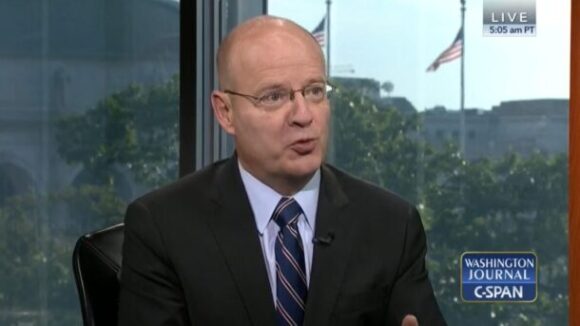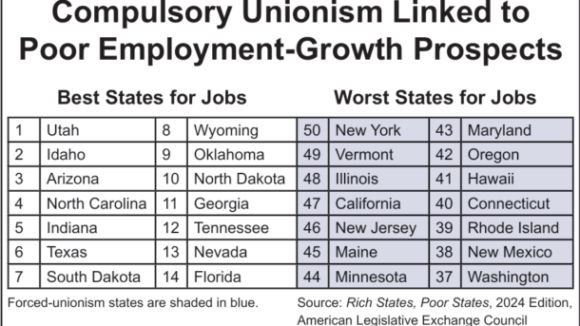Will Team Biden Weaponize Workers’ Pensions?
Big Labor abuse of worker pension and benefit funds as a means of advancing union bosses’ self-aggrandizing policy objectives is a familiar phenomenon.

The Investor’s Business Daily confirms that enacting Right to Work laws is a recipe for jobs and economic growth:
The business world is abuzz over the National Labor Relations Board’s complaint vs. Boeing’s new South Carolina production line. For NLRB critics, the case boils down to one thing: “right-to-work” laws.
Right-to-work states have generally lower unemployment, higher job growth, lower taxes and better business climates. They have growing populations and have been attracting businesses from other states.
In most states, once a workplace is unionized, employees are required to join the union or they can’t work there. But 22 states, including South Carolina, have passed laws that give employees the right not to join. Hence the term “right-to-work.”
Unions dislike these laws for the obvious reason: It reduces their membership.
Why go to these states?
“It gives employers more flexibility and it gives the workers more individual rights,” said Chris Edwards, senior fellow at the free-market Cato Institute. “Unionized workforces are more likely to demand unaffordable compensation that puts the businesses at a disadvantage.”
It seems to be a good deal for the workers, too. The U.S. unemployment rate is 9.1%. In right-to-work states the average is 7.9% — 8.6% adjusted for population.
Between 1977-08, employment grew 100% in right-to-work states vs. the national average of 71% and 56.5% in non-right-to-work states. That’s according to a January study that Ohio University economics professor Richard Vedder did for the Indiana Chamber of Commerce.
In this period, real per capita income in the right-to-work states grew 62.3% vs. the national average of 54.7% and 52.8% for non-right-to-work states.
Vedder has studied right-to-work laws for decades and argues that this success is not a coincidence.
” I’ve been looking for ways to show that these laws don’t really (impact) anything. But I haven’t found it yet,” Vedder said.
Between 2000-09, about 5 million people moved to right-to-work states from other states. The population of 25- to 34-year-olds in right-to-work states has grown 16%, according to an American Legislative Exchange Council study, indicating that they “attract the most productive members of society.”

Big Labor abuse of worker pension and benefit funds as a means of advancing union bosses’ self-aggrandizing policy objectives is a familiar phenomenon.

What impact does handing a union monopoly power to deal with your employer on matters concerning your pay, benefits, and work rules have on your pay?

Wherever Big Labor wields the power to collect forced union dues, union bosses funnel a large share of the confiscated money into efforts to elect and reelect business-bashing politicians. Employment growth tends to lag as a consequence.